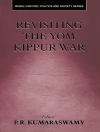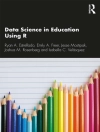Despite publicity given to the successes of British and American codebreakers during the Second World War, the study of signals intelligence is still complicated by governmental secrecy over even the most elderly peacetime sigint. This book, first published in 1986, lifts the veil on some of these historical secrets. Christopher Andrew and Keith Neilson cast new light on how Tsarist codebreakers penetrated British code and cypher systems. John Chapman’s study of German military codebreaking represents a major advance in our understanding of cryptanalysis during the Weimar Republic. The history of the Government Code and Cypher School – forerunner of today’s GCHQ – by its operational head, the late A.G. Denniston, provides both a general assessment of the achievements of British cryptanalysis between the wars and a tantalising glimpse of what historians may one day find in GCHQ’s forbidden archives. The distinguished cryptanalyst of Bletchley Park, the late Gordon Welchman, describes in detail how the Ultra programme defeated the German Enigma machine, while another Bletchley Park cryptographer, Christopher Morris, reminds us in his account of the valuable work on hand cyphers that wartime sigint consisted of much more than Ultra. Roger Austin’s study of surveillance under the Vichy regime shows the continuing importance of older and simpler methods of message interception such as letter-opening. Taken together, the articles establish sigint as an essential field of study for both the modern historian and the political scientist.
Christopher Andrew
Codebreaking and Signals Intelligence [PDF ebook]
Codebreaking and Signals Intelligence [PDF ebook]
Mua cuốn sách điện tử này và nhận thêm 1 cuốn MIỄN PHÍ!
Ngôn ngữ Anh ● định dạng PDF ● Trang 148 ● ISBN 9781000370515 ● Biên tập viên Christopher Andrew ● Nhà xuất bản Taylor and Francis ● Được phát hành 2021 ● Có thể tải xuống 3 lần ● Tiền tệ EUR ● TÔI 7810418 ● Sao chép bảo vệ Adobe DRM
Yêu cầu trình đọc ebook có khả năng DRM












